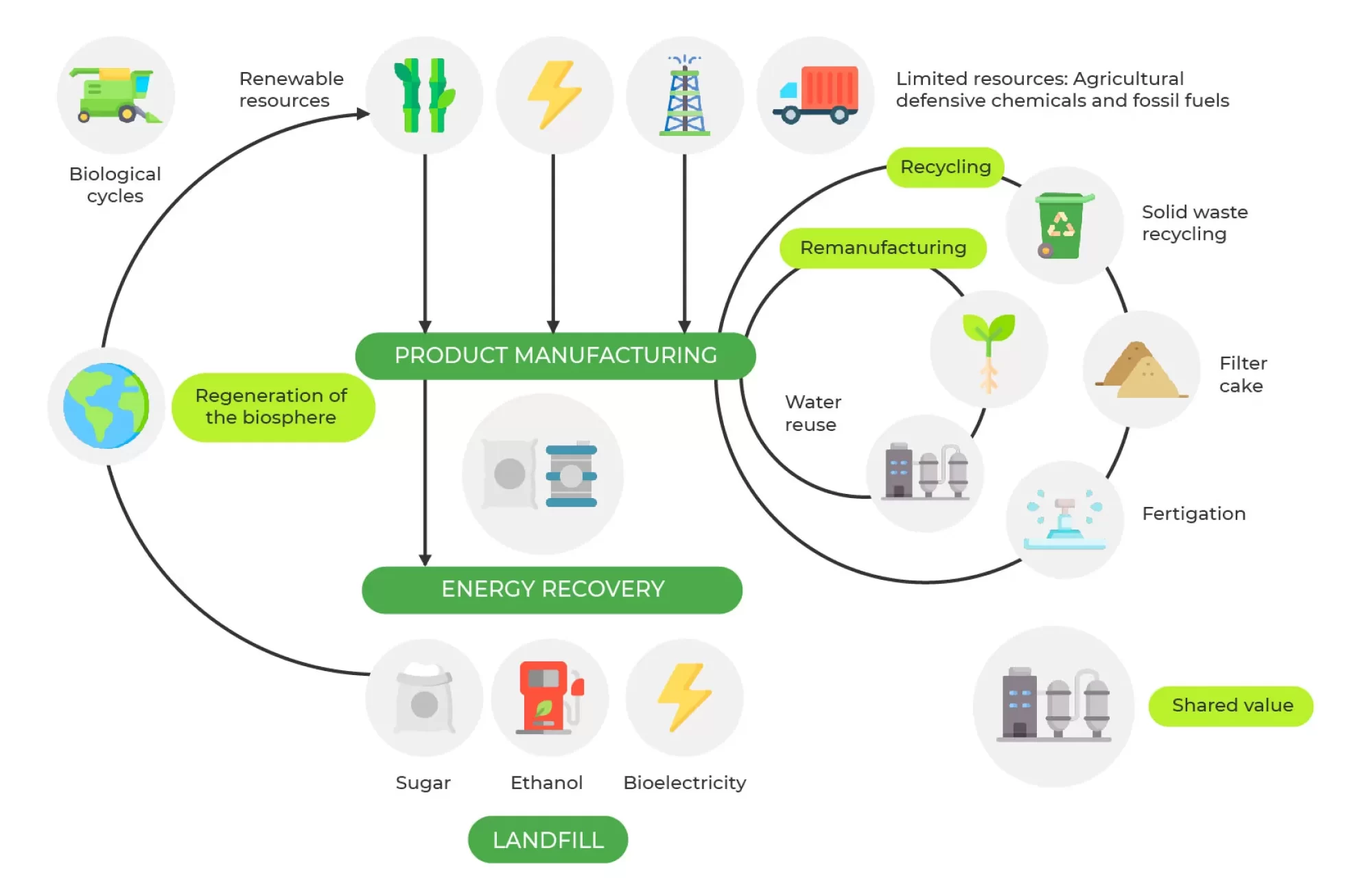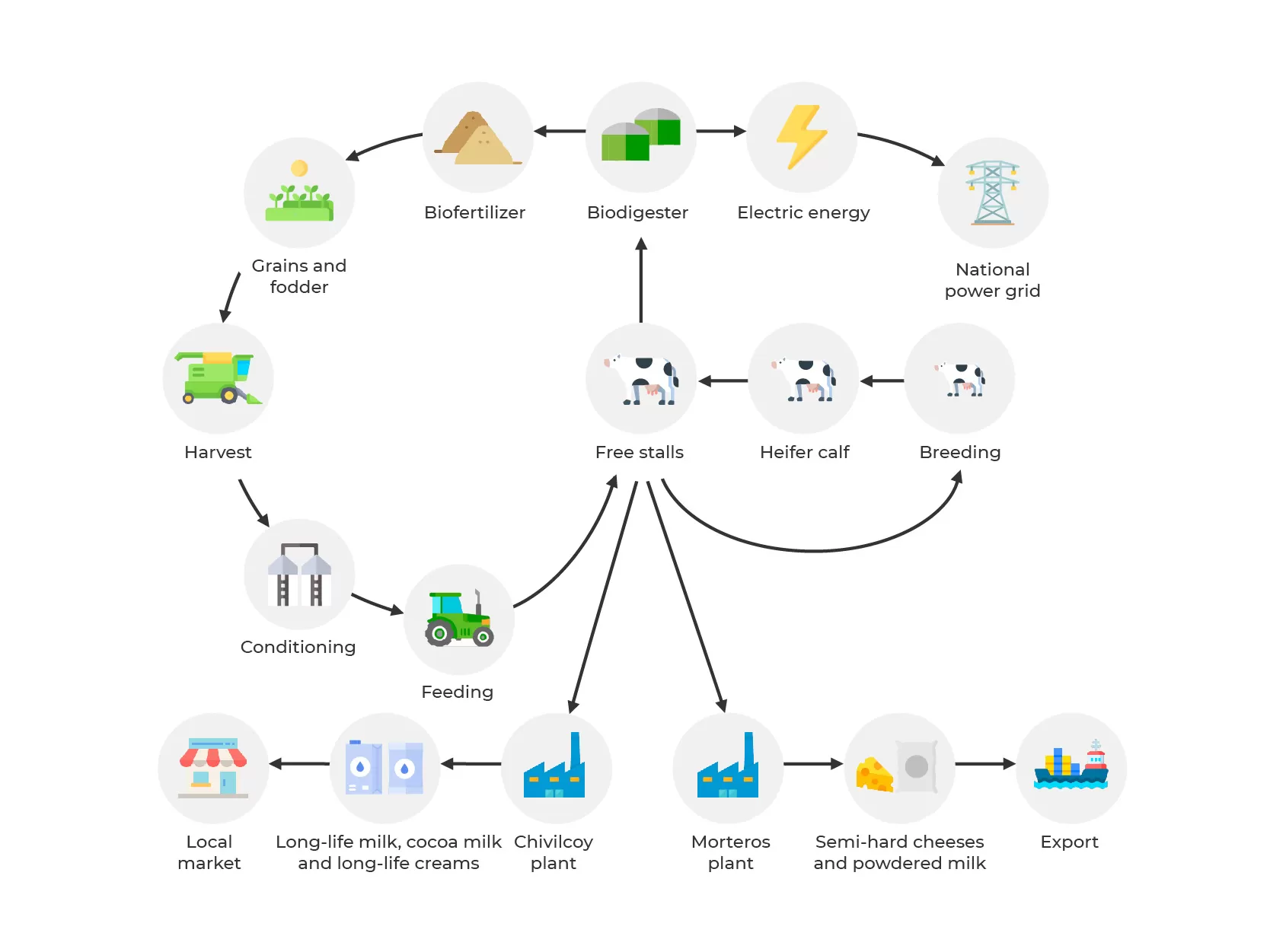Diseño y Desarrollo: MNDRN
Circular economy
In the development of our lines of business, we use the by-products generated in each production process. In this way, we make progress in circular economy practices.
Circular model
with sugar cane
In addition to processing sugarcane to obtain sugar and ethanol, we also generate biomass from the fibrous residue of sugarcane, which we call bagasse. We use this by-product to cogenerate steam and electricity. Most of the energy generated is consumed at our facilities, and the rest is sold to the national electricity distribution system. The electricity we supply to the state grid is enough to meet the demand of 1,070,000 people in Mato Grosso do Sul!
We also use other by-products from our industrial process to produce biofertilizers that are returned to our fields. The ashes from the boilers together with the filter cake undergo a composting process and are used as organic fertilizer in the sugarcane growing areas. In our Angelica (MS) and Ivinhema (MS) plants, the vinasse generated during sugarcane processing goes through an industrial concentration process and is converted into liquid organic fertilizer. This process is registered and recognized by the Ministry of Agriculture, Livestock and Supply. It is applied as biofertilizer on cane crops, while another part of the vinasse generated is used in the manufacture of biogas and biomethane.
We reuse all the waste from our
sugar cane processing.
A large part of our sugar cane fields receives liquid biofertilizers, ensuring the correct and safe use of the vinasse concentrated in the process. In total, we produce around 70 million liters of liquid biofertilizer monthly.
Circular model in
our dairy farms
In our dairy farms, we develop a production model where manure is used to generate electricity with biodigesters. At the end of 2017, the biogas plant began operating in our dairy farms, with which we already generate more than 36,000 MWh of renewable energy. In 2023 the second biodigester came into operation. It has an installed capacity of 2 MW and an energy generation potential of 17,500 MWh per year.
At the same time, the waste from this process returns to the fields as biofertilizer with a lower organic load, to fertilize the crops and fodder that will be fed to the cows. In these years, we have already processed more than 256,000 tons of cow manure from our dairy farms. With these processes, we have managed to reduce the use of chemical fertilizers, to increase soil carbon, to reduce greenhouse gas emissions and to reduce odor.

